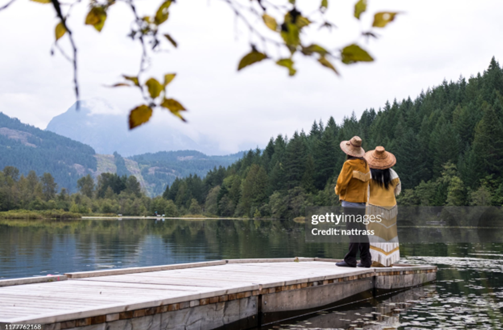
Two Indigenous Women by a Lake
Indigenous Peoples and Economic Injustices
For hundreds of years, capitalism and greed, co-mingled with racism, has led to many First Nations communities being uprooted and having their land stolen or entire communities destroyed.
The lack of clean drinking water on reserves such as Grassy Narrows in Ontario where the Indigenous population has faced a lack of potable water for decades and which has resulted in our fellow Canadians being terminally ill from environmental abuse that has been perpetuated in Indigenous communities all over Canada.
Grassy Narrows Residents in Toronto
For the ”lucky ones” who still live on reserves, they are being poisoned by companies that pollute their rivers and waterways with effluent from their factories:
- Pictou Landing First Nation (PLFN), a small Mi’Kmaw community on the Canadian east coast, has had a relationship with a tidal estuary known as A’se’k for millennia.
- In the 1960s, it became the site of effluent disposal from a nearby pulp mill. Almost immediately, health concerns regularly and consistently reverberated throughout the community.
The companies that pollute the lands where the First Nations, Inuit and Metis peoples have been forced to live, rarely face any consequences for the destruction of lands, and physical and mental harm that they have caused—sometimes for decades.

Pollution of Sacred Land
Once the land that supported a community has been forever altered and its old growth forests destroyed, how would the First Nations people who had survived on subsistence fisheries and medicinal functions for over a thousand years survive, and how do you rectify the damage that has been caused? How would you remove the pollutants that are now in the water, in the plants and vegetation, in the animals and in the people? What would be considered a fair restitution? Is $75,000 of a $225,000 fine enough?
After 50 years of effluent flow into a once pristine waterway, how much restitution can be achieved with $75,000? That is the amount that was awarded in 2015, to the Pictou Landing First Nations, after the Provincial Court of Nova Scotia levied a fine against Northern Pulp Nova Scotia Corporation for a 2014 effluent escape that dumped 47 million litres of toxic sludge into the A’se’k estuary.
